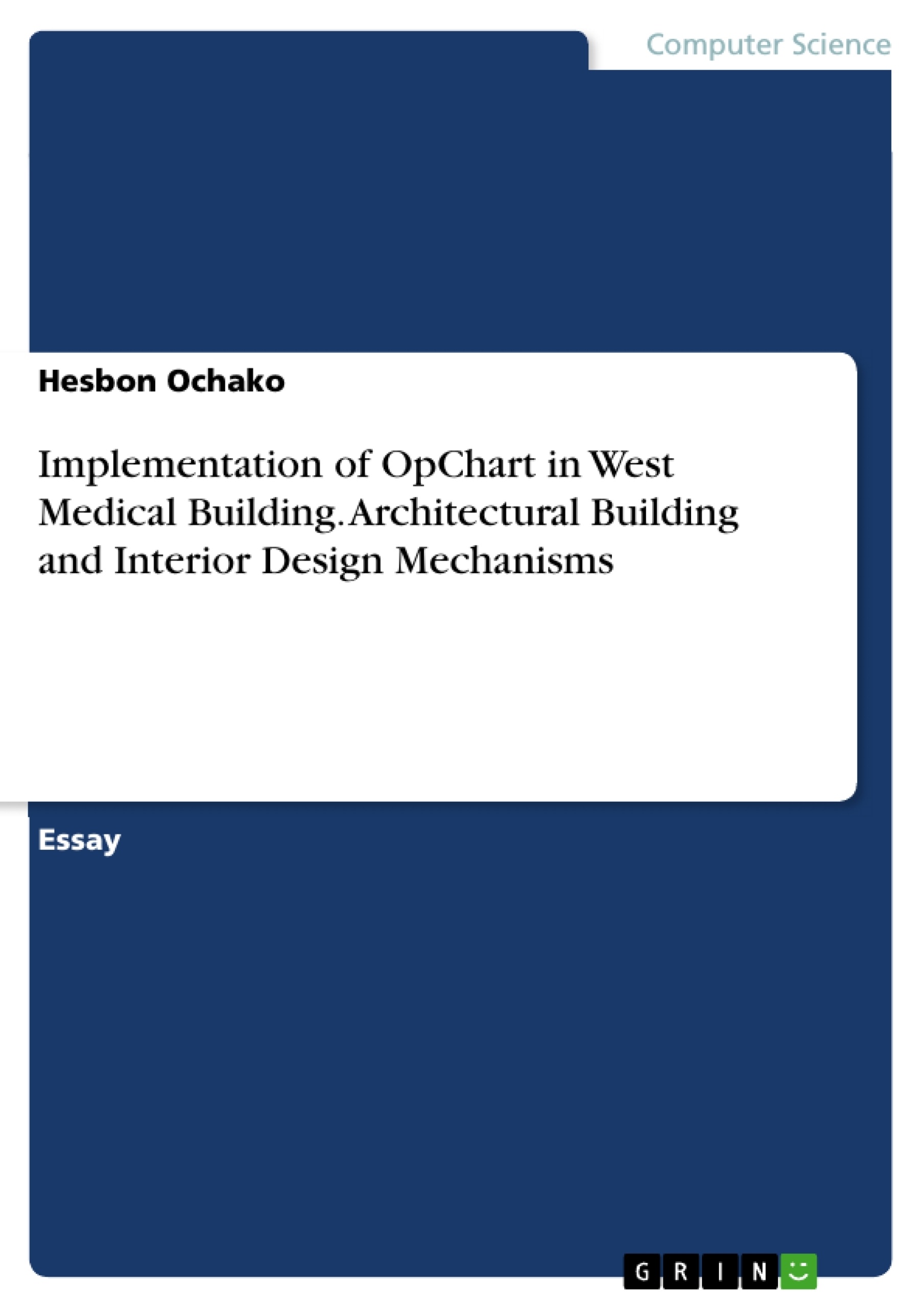The use of Information Technology is emerging in the Healthcare industry; and rigorous evaluation of the technological involvement is recommended for use by the decision-makers and users altogether. Despite the implementation of this technology, reports on the benefits and adoption remain limited, which prompted a Critical Care Information Systems implementation involving the human, organization, and technology fit implementation (Yusof et al., 2008). This case study evaluates the implementation of OpChart in the West Medical Building using the HOT-Fit approaches and examines the effectiveness of the system.
Implementation of OpChart in West Medical Building
The use of Information Technology is emerging in the Healthcare industry; and rigorous evaluation of the technological involvement is recommended for use by the decision-makers and users altogether. Despite the implementation of this technology, reports on the benefits and adoption remain limited, which prompted a Critical Care Information Systems implementation involving the human, organization, and technology fit implementation (Yusof et al., 2008). This case study evaluates the implementation of OpChart in the West Medical Building using the HOT-Fit approaches and examines the effectiveness of the system.
According to Yusof (2015), the Technology employed in the healthcare must fit both the Human and Organization. However, various factors influence it capacity to fit the Human and Organization. The Technology entails System Quality, Information Quality, and Service Quality while the Human entails the System Use and User Satisfaction. On the other hand, the Organizational factors include the structure and the environment all that directly influence the net benefits of the system. Ammenwerth et al. (2003) indicate that three major problems occur during the evaluation of the Information Technology in the health care industry. These problems majorly being the complexity of an evaluation project, the complexity of the evaluation project, as well as the motivation for evaluation of a project. The authors suggest a broadly accepted structure for analysis of the IT in the healthcare sector that can help to formulate and answer relevant questions, find enough tools and apply them sensibly would help solve the problems thereof.
In the case study by Hoot and David (2005), the system seems to have issues because it keeps locking up when the users login to it. Actually, some of the users feel that the system is choosey and does not work effectively all the time. This could be dangerous since the system is very essential when the physicians have a patient to operate on, and the system locks up. The system is among the many perioperative informatics initiatives including many computer-based modules designed locally by the IT department with a direct involvement of the entire staff practicing anesthesiology. The OpChart involves an electronic documentation of the patient’s information during an operation. Some sections of the operation department reject the use of OpChart largely because of because of the rejection of the system by some users, conflict within the anesthesiology department, and a common feeling of resentment and mistrust towards the OpChart system. However, the Health Insurance Portability and Accountability Act (HIPAA) make electronic documentation during patient operation a paramount phase of the process.
According to Lapointe et al. (2010), it is important to measure the effectiveness of the system with the accuracy it deserves by measuring all the benefits and adverse, expected and unexpected effects. Based on such perspective, the OpChart system is wanting because it does not meet the HOT-Fit essentials that make it effective. The Human factor must accept and have no issues working with the Technology since the two factors have a direct linkage with the Organization. In the case study, one department does not adopt the system due to its inability to come through at times when it is needed to perform some function, thus failing the Technology effectiveness phase. Some users also feel like the system does not like them probably because it fails more often when they are on duty, thus the system fails the user friendly perspective. Therefore, the Organization is likely to have an issue with the HIPAA because it needs to have electronic documentation during surgery, yet the system designed for the purpose fails to perform effectively.
In summary, using the HOT-Fit perspective, the result indicated some issues in the adoption of the OpChart system because the system does not fit the Human aspect, which directly affects the Organization aspect of the case. The parameters above (Human, Organization, and Technology) directly influence each other towards having an effective system.
References
Ammenwerth, E., Gräber, S., Herrmann, G., Bürkle, T., & König, J. (2003). Evaluation of health information systems—problems and challenges. International Journal of Medical Informatics, 71(2), 125-135.http://proxy.cc.uic.edu/login?url=http://www.sciencedirect.com/science/article/pii/S138650560300131X
Hoot NR, Sanders DL. In: Lorenzi NM, Ash JS, Einbinder J, McPhee W, Einbinder L, editors. Transforming health care through information, 2nd edition. New York: Springer Science & Business Media; 2005. P 81 - 91.
Lapointe, L., Mignerat, M., & Vedel, I. (2011). The IT productivity paradox in health: A stakeholder's perspective. International Journal of Medical Informatics, 80(2), 102-115.http://proxy.cc.uic.edu/login?url=http://www.sciencedirect.com/science/article/pii/S1386505610002248
Yusof, M. M. (2015). A case study evaluation of a Critical Care Information System adoption using the socio-technical and fit approach. International Journal of Medical Informatics, 84(7), 486-499.http://proxy.cc.uic.edu/login?url=http://www.sciencedirect.com/science/article/pii/S1386505615000611
Yusof, M. M., Kuljis, J., Papazafeiropoulou, A., & Stergioulas, L. K. (2008). An evaluation framework for Health Information Systems: human, organization and technology-fit factors (HOT-fit). International Journal of Medical Informatics, 77(6), 386-398.http://proxy.cc.uic.edu/login?url=http://www.sciencedirect.com/science/article/pii/S1386505607001608
[...]
- Quote paper
- Hesbon Ochako (Author), 2014, Implementation of OpChart in West Medical Building. Architectural Building and Interior Design Mechanisms, Munich, GRIN Verlag, https://www.grin.com/document/429230




